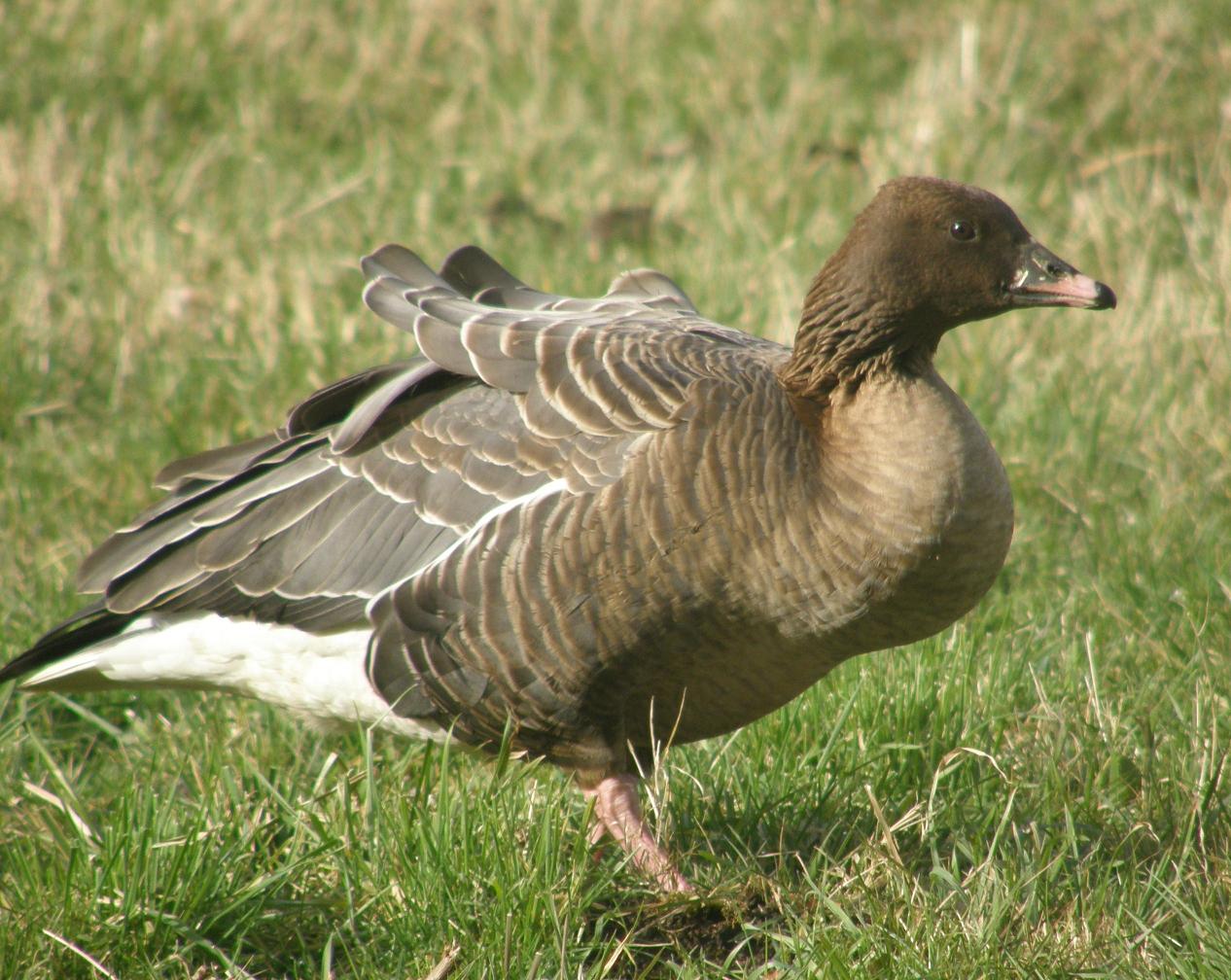
Pink-footed goose(Anser brachyrhynchus)
Phylum —chordata
Class — aves
Order — anseriformes
Family — anatidae
Genus – anser
Appearance
It is a medium-sized goose, 60–75 cm (24–30 in) long, the wingspan 135–170 cm (53–67 in), and weighing 1.8–3.4 kg (4.0–7.5 lb). It has a short bill, bright pink in the middle with a black base and tip, and pink feet. The body is mid-grey-brown, the head and neck a richer, darker brown, the rump and vent white, and the tail grey with a broad white tip. The upper wing-coverts are of a somewhat similar pale bluish-grey as in the greylag goose, and the flight feathers blackish-grey.
Habitat
The pink-footed goose is a goose which breeds in eastern Greenland, Iceland and Svalbard. It is migratory, wintering in northwest Europe, especially Ireland, Great Britain, the Netherlands, and western Denmark.
Diet
The diet is almost entirely vegetarian. In summer, pink-footed geese feed on a wide range of tundra plants, both on land and in water. In winter, they graze primarily on oilseed rape, sugar beet, potato, and various grasses; damage to crops can be extensive, though their grazing can also benefit particularly sugar beet and potato farmers by gleaning leaves and roots left behind after the crop is harvested, reducing the transmission of crop diseases from one year to the next.
Reproduction
The nest is placed on a ledge along a mountain slope or on some other point of elevation in the terrain that provides a good view of the surroundings. Former nest sites are re-used, and these become recognizable because their elevated rims become vegetated. The nest scrape is lined with plant material and large amounts of down. During the pre-nesting period the females feed intensively to build up the fat reserves.
Egg-laying commences during the first days of June. The normal clutch size is four (but it can range from three to five). The eggs are white, but often become a dirty yellow-brown during the 26–27 days incubation period. Only the female incubates, while the male remains nearby guarding his mate.
The young abandon the nest soon after hatching and are fledged about eight weeks later. After hatching the adults moult their plumage and lose the ability to fly for several weeks while their flight feathers regrow. Families stay together until the northward migration the following spring.
Most birds become sexually mature when they are three years of age.
Pink-footed geese live for about 20 years in the wild.
In captivity
When keeping this species, it is necessary to have a pool with water or a natural reservoir. The optimal ratio of the reservoir area to pasture is 20% water and 80% pasture. The optimal area of the entire enclosure is 200 sq. m. The optimal height of grass in the pasture is 7.5 cm.
It is necessary to build a poultry house on the territory of the aviary. Geese will be able to hide in it from the cold and wind in the cold season. You need constantly to update the litter in the poultry house. For such bedding, you will need about 40 kg of dry straw (hay). It is important to replace the wet bedding in time. Otherwise, the plumage quickly becomes dirty and does not protect the bird from the cold.
The poultry house should be made of wood or mud. Humidity and drafts are not allowed in it. Proper maintenance of geese is the key to their health.
During the construction of a poultry house, it is very important to take into account that at least one square meter of floor space should be allocated for one adult goose. With a higher density, the room will quickly become polluted, and the air in it will stagnate. This can cause diseases of wild geese and significantly reduce their productivity. Once a year, you need to whitewash the walls with freshly slaked lime.
Geese eat natural grasses. You can add to herbs: wheat grains, waterfowl pellets, and chicken feed. If there is not enough grass on the pasture, it is necessary to bring mown fresh grass. In winter, you can feed sliced vegetables, especially good to give cabbage and salads. Not averse to eating worms, insects and shellfish sometimes.
 Russian
Russian
 English
English
























